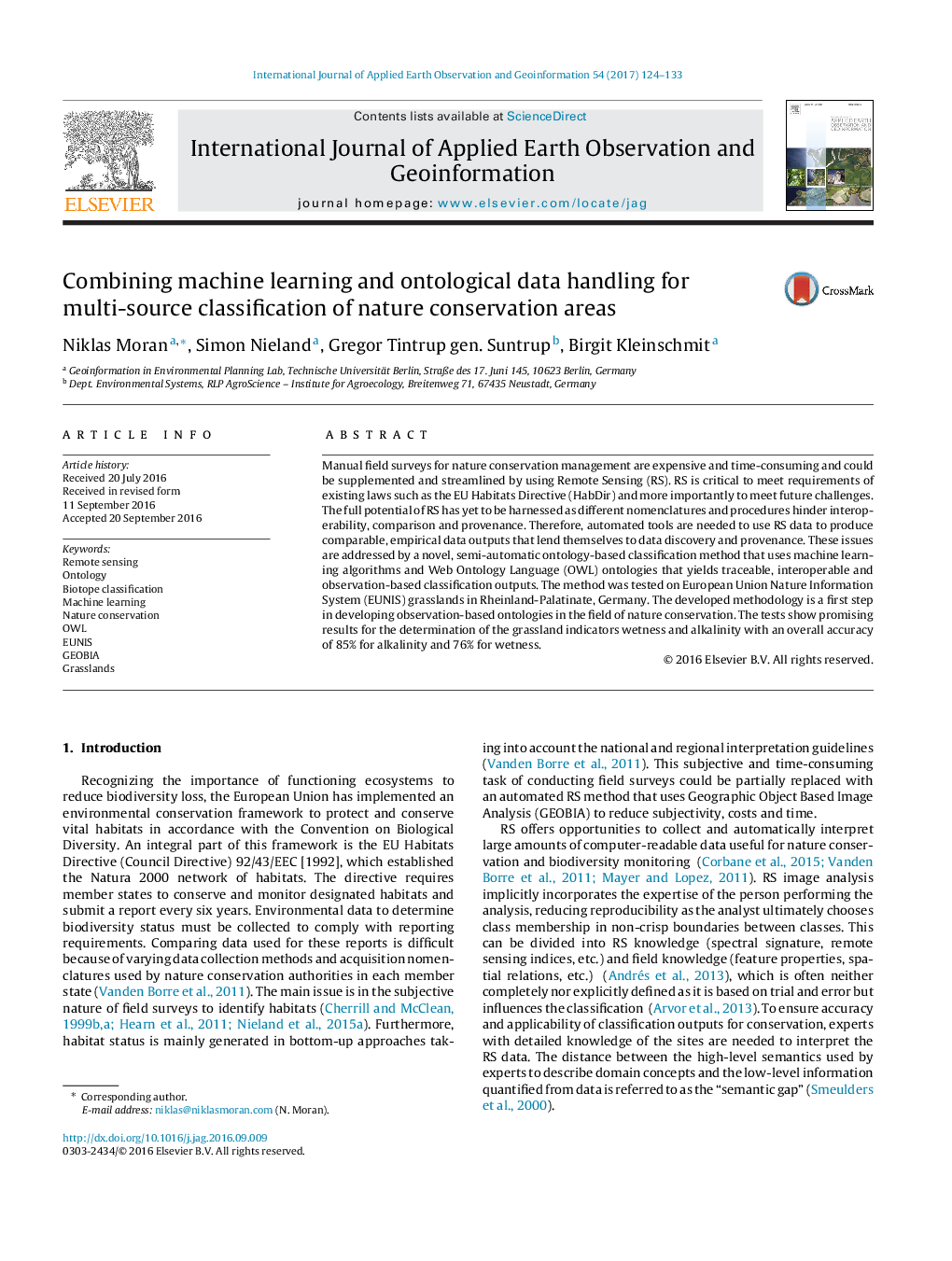| Article ID | Journal | Published Year | Pages | File Type |
|---|---|---|---|---|
| 6348436 | International Journal of Applied Earth Observation and Geoinformation | 2017 | 10 Pages |
Abstract
Manual field surveys for nature conservation management are expensive and time-consuming and could be supplemented and streamlined by using Remote Sensing (RS). RS is critical to meet requirements of existing laws such as the EU Habitats Directive (HabDir) and more importantly to meet future challenges. The full potential of RS has yet to be harnessed as different nomenclatures and procedures hinder interoperability, comparison and provenance. Therefore, automated tools are needed to use RS data to produce comparable, empirical data outputs that lend themselves to data discovery and provenance. These issues are addressed by a novel, semi-automatic ontology-based classification method that uses machine learning algorithms and Web Ontology Language (OWL) ontologies that yields traceable, interoperable and observation-based classification outputs. The method was tested on European Union Nature Information System (EUNIS) grasslands in Rheinland-Palatinate, Germany. The developed methodology is a first step in developing observation-based ontologies in the field of nature conservation. The tests show promising results for the determination of the grassland indicators wetness and alkalinity with an overall accuracy of 85% for alkalinity and 76% for wetness.
Related Topics
Physical Sciences and Engineering
Earth and Planetary Sciences
Computers in Earth Sciences
Authors
Niklas Moran, Simon Nieland, Gregor Tintrup gen. Suntrup, Birgit Kleinschmit,
